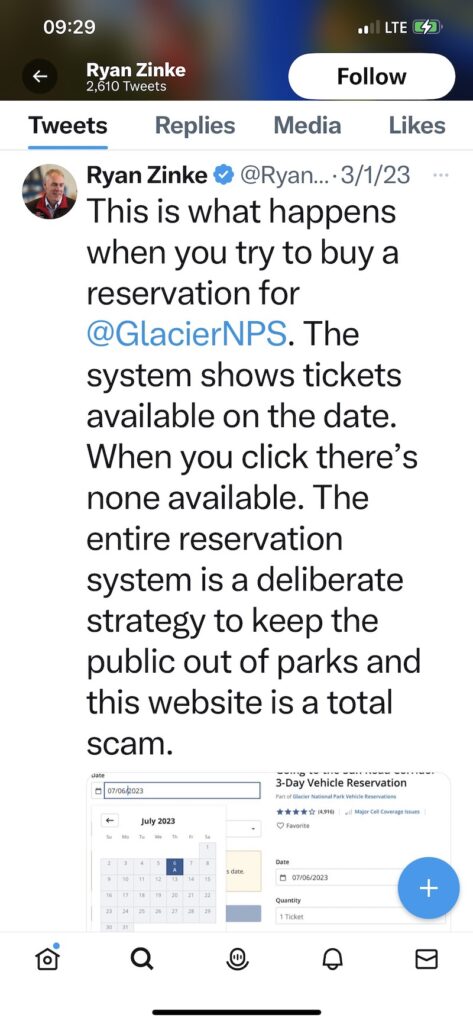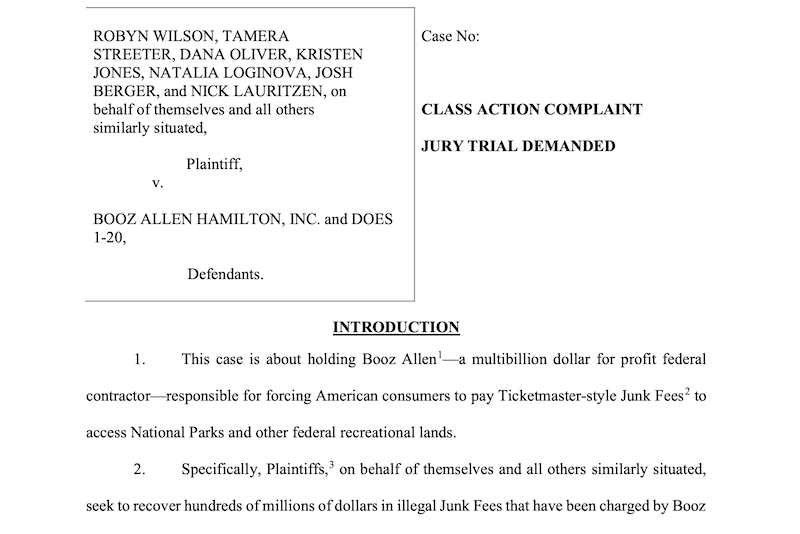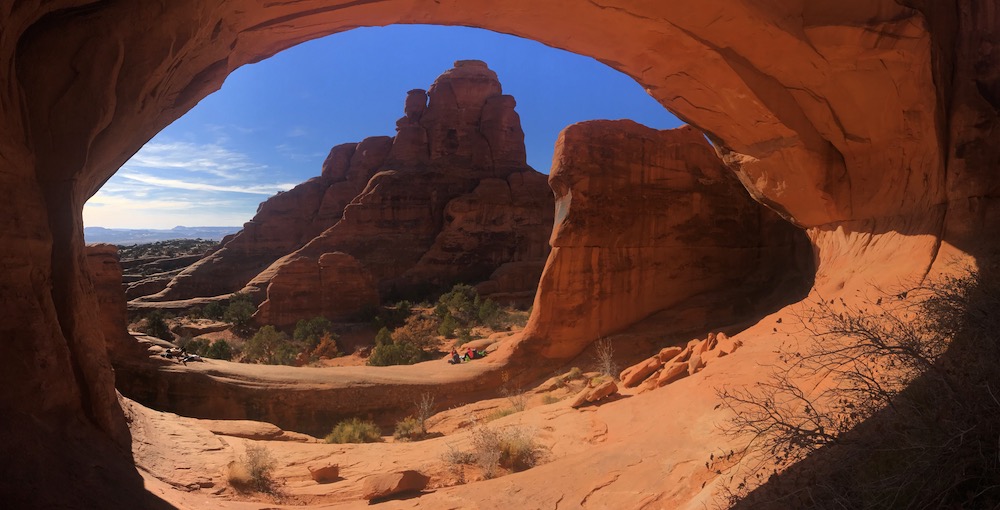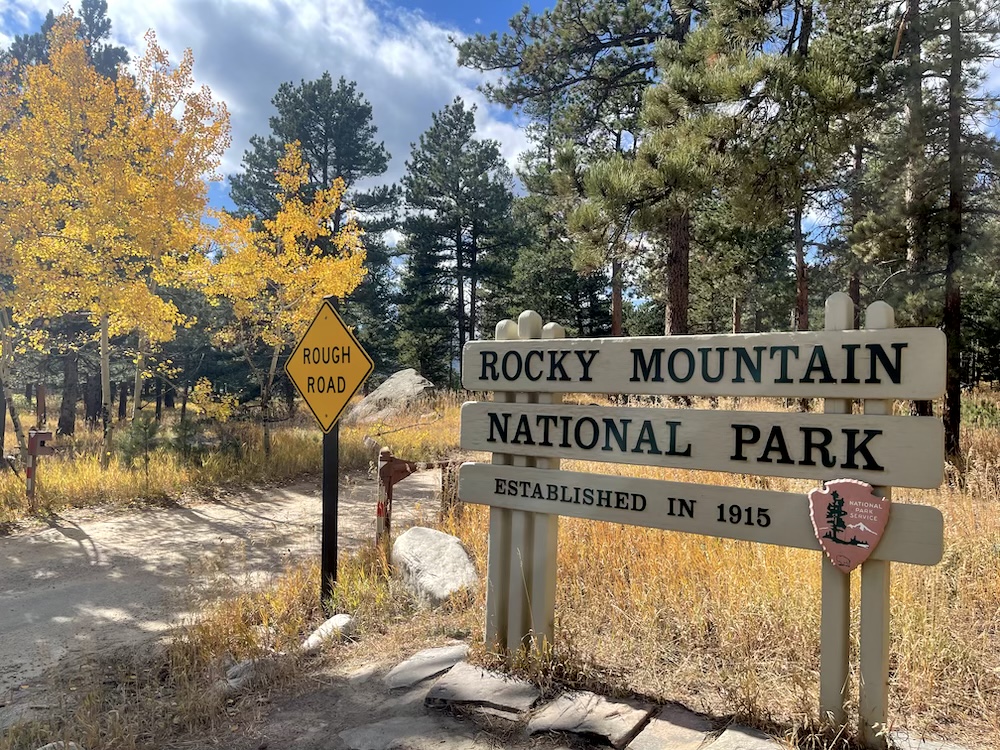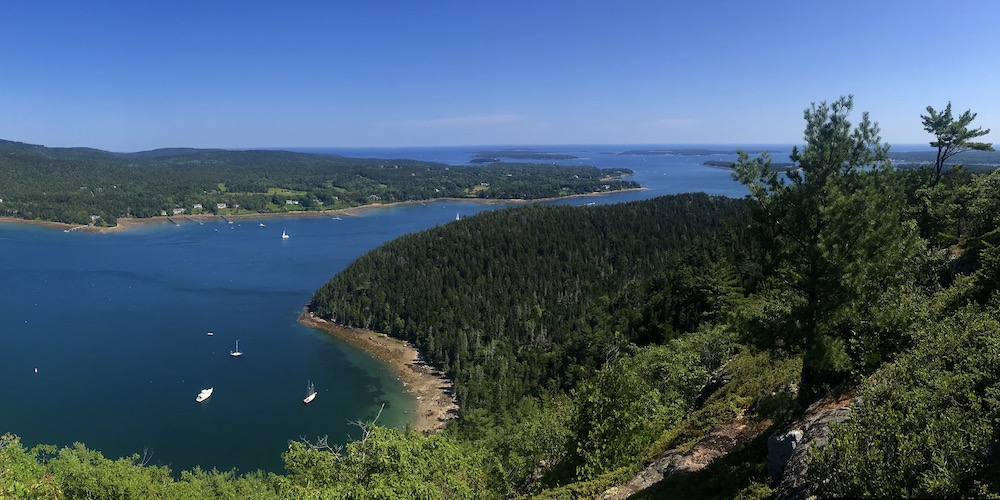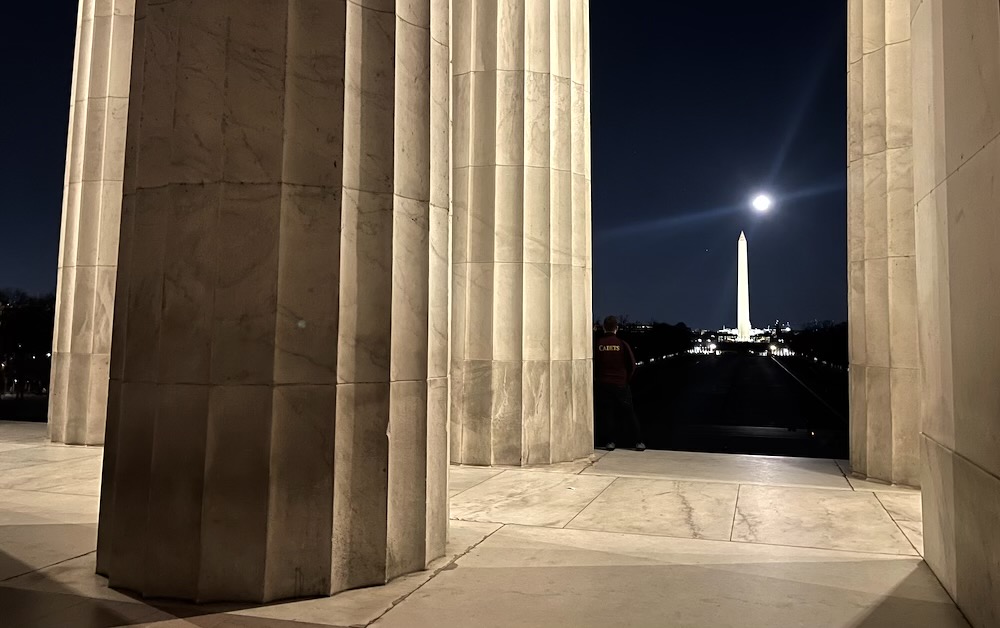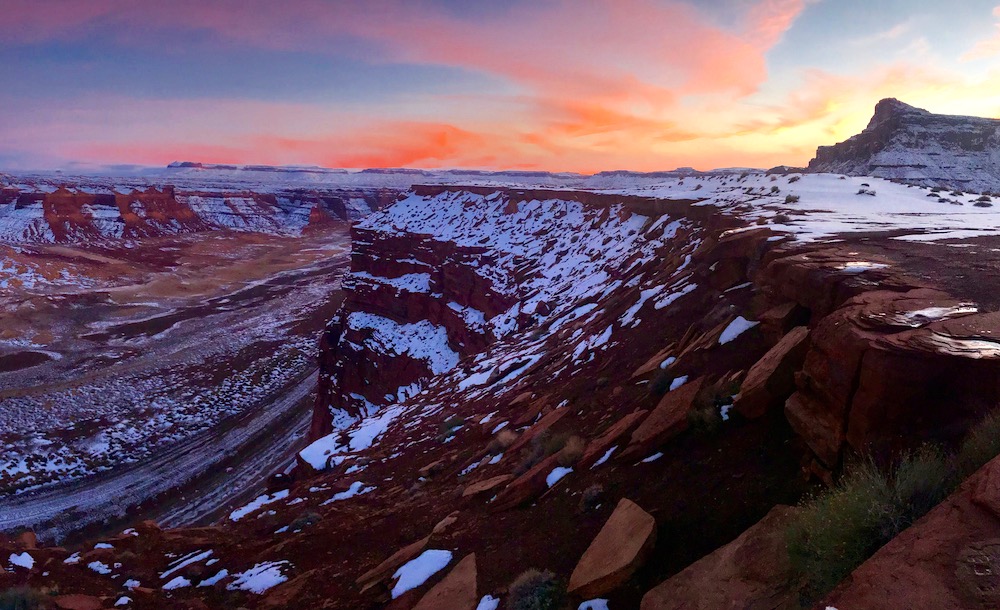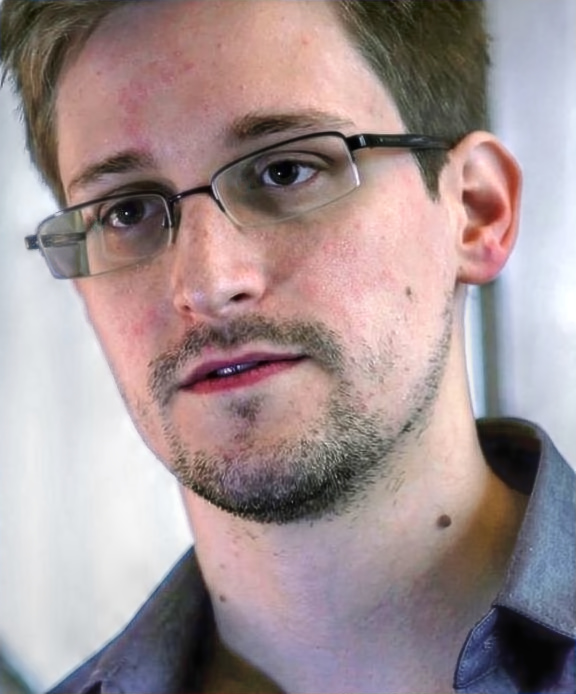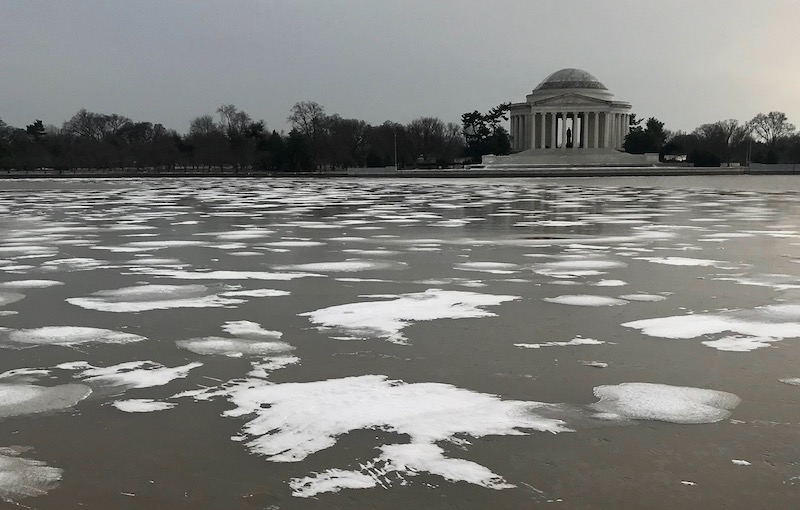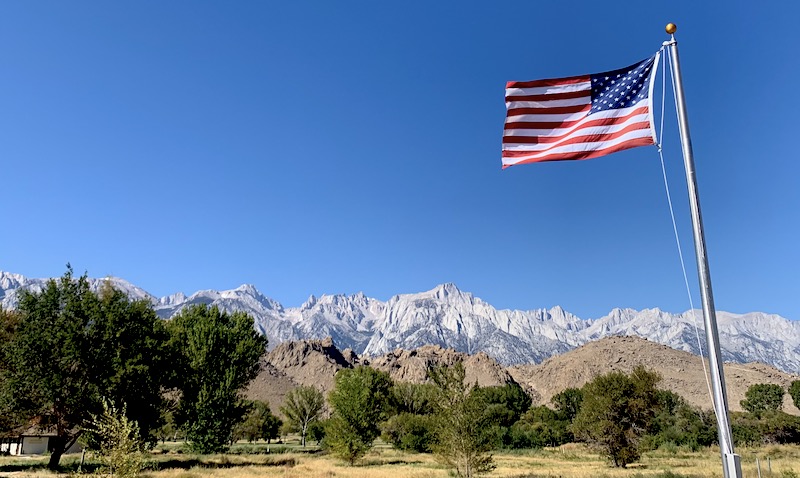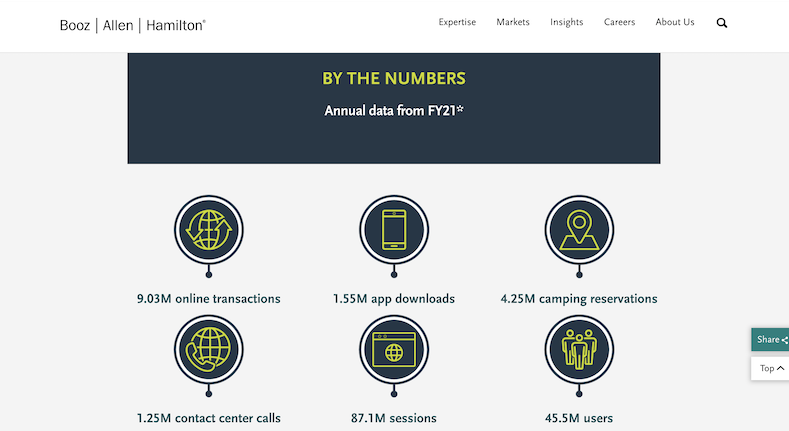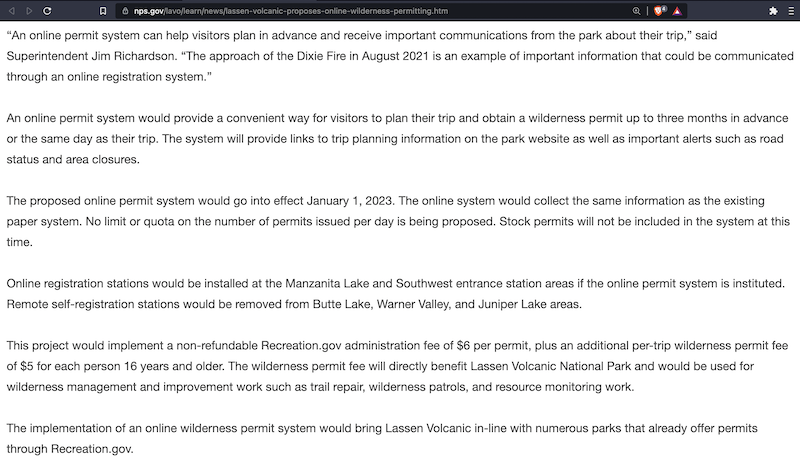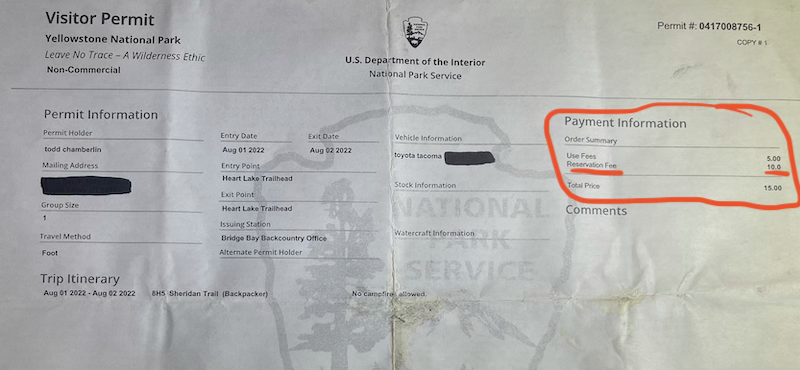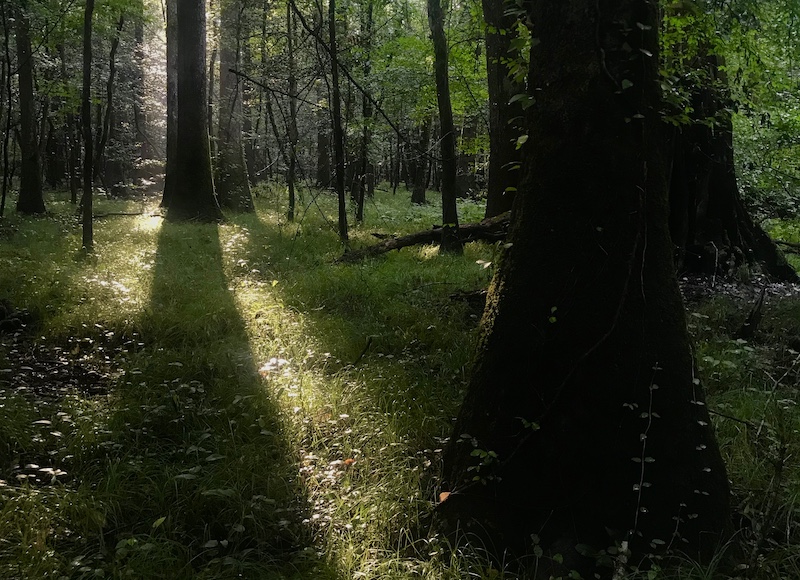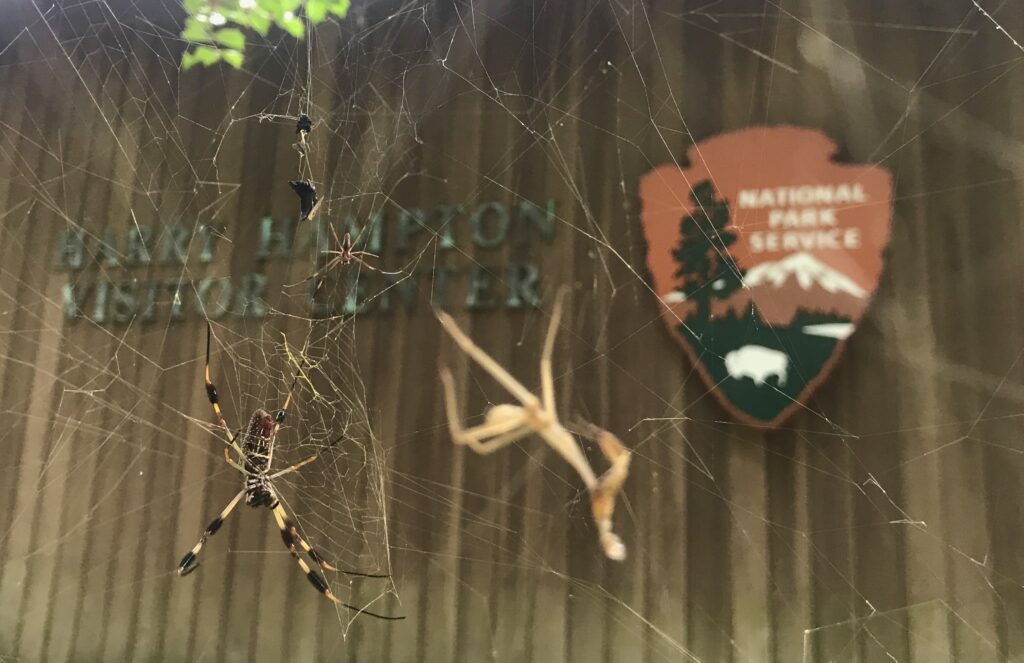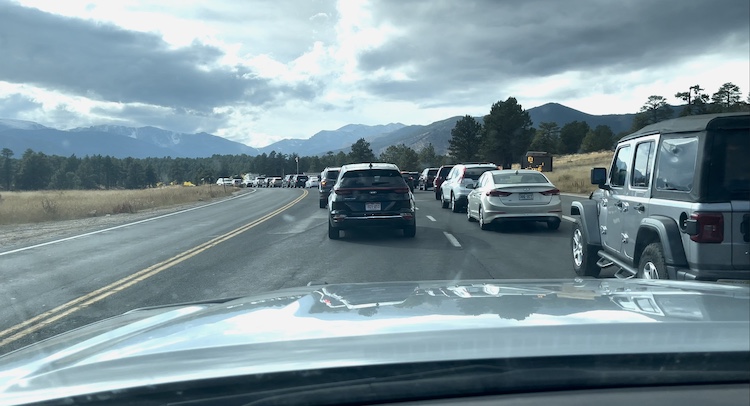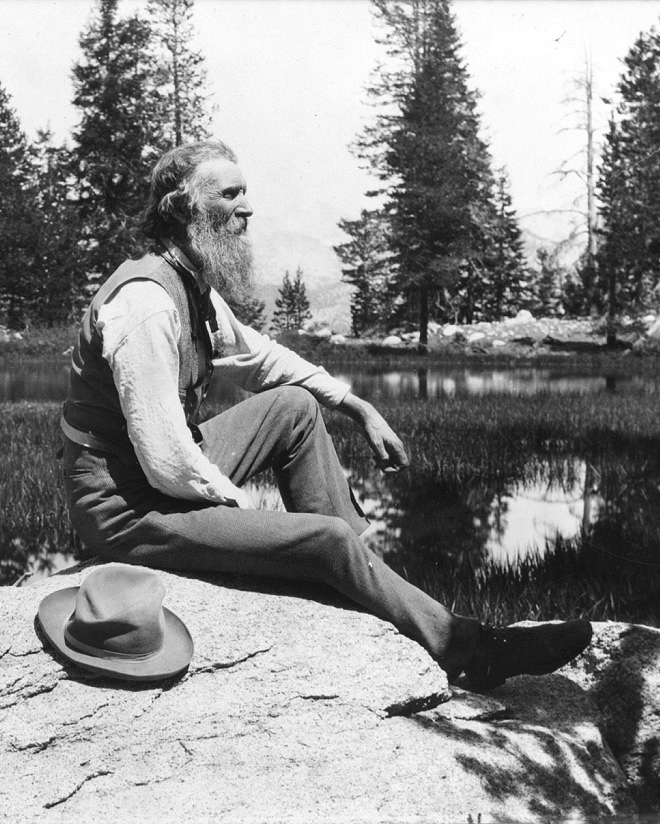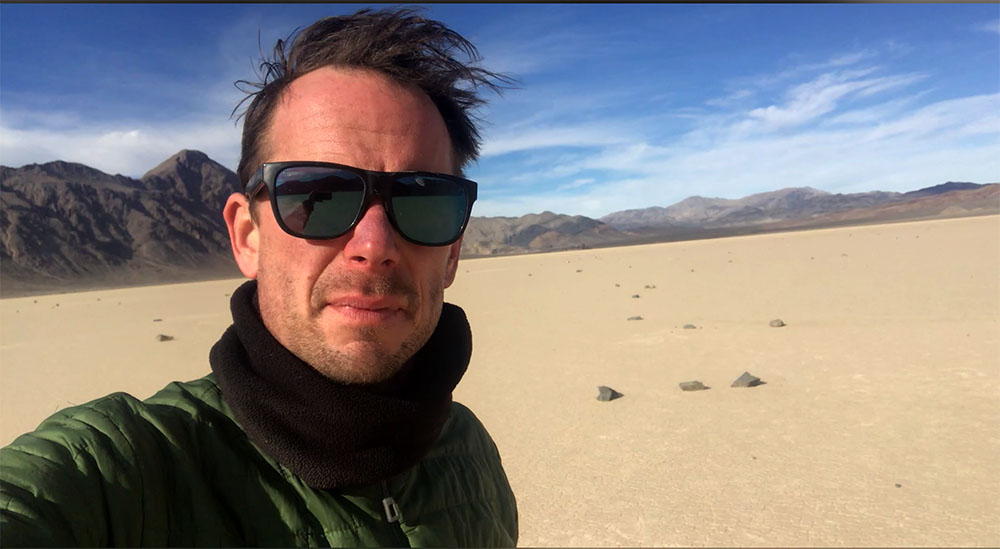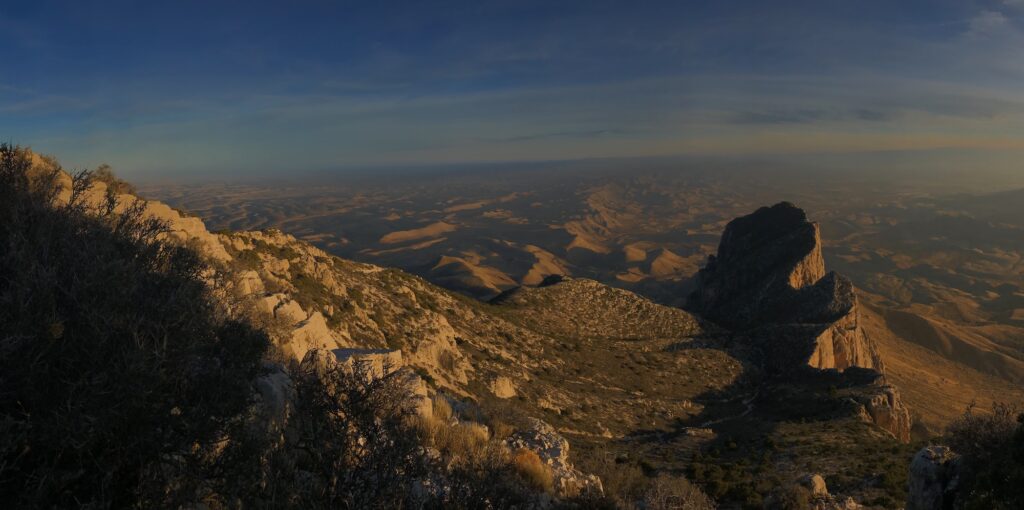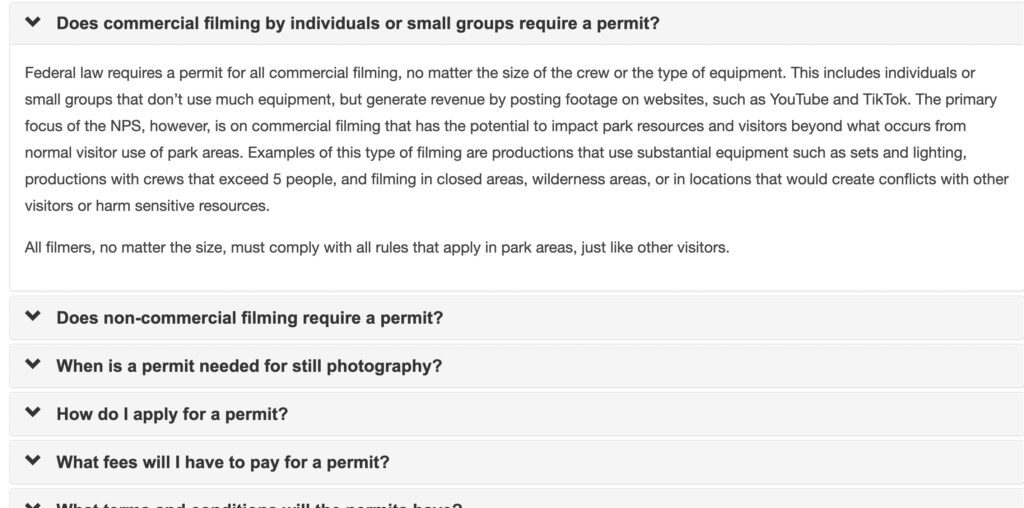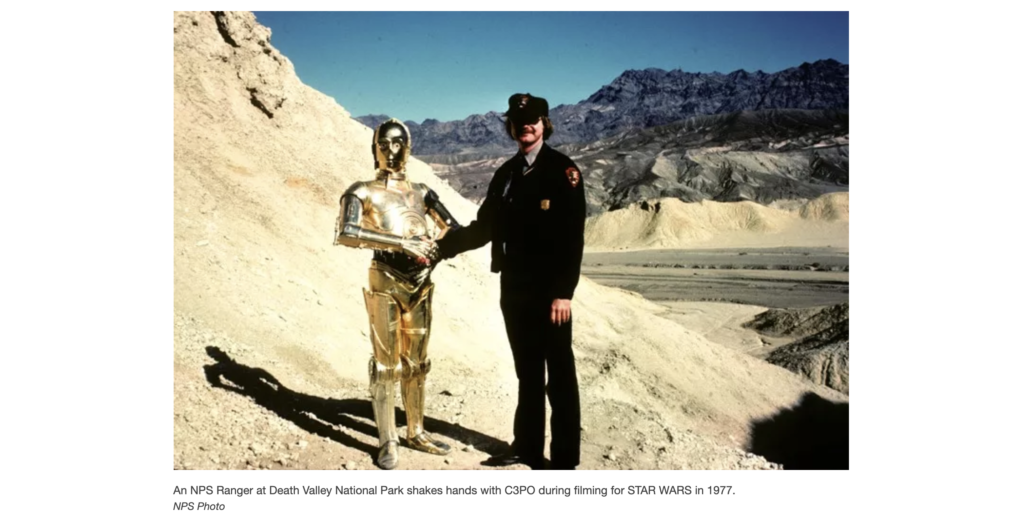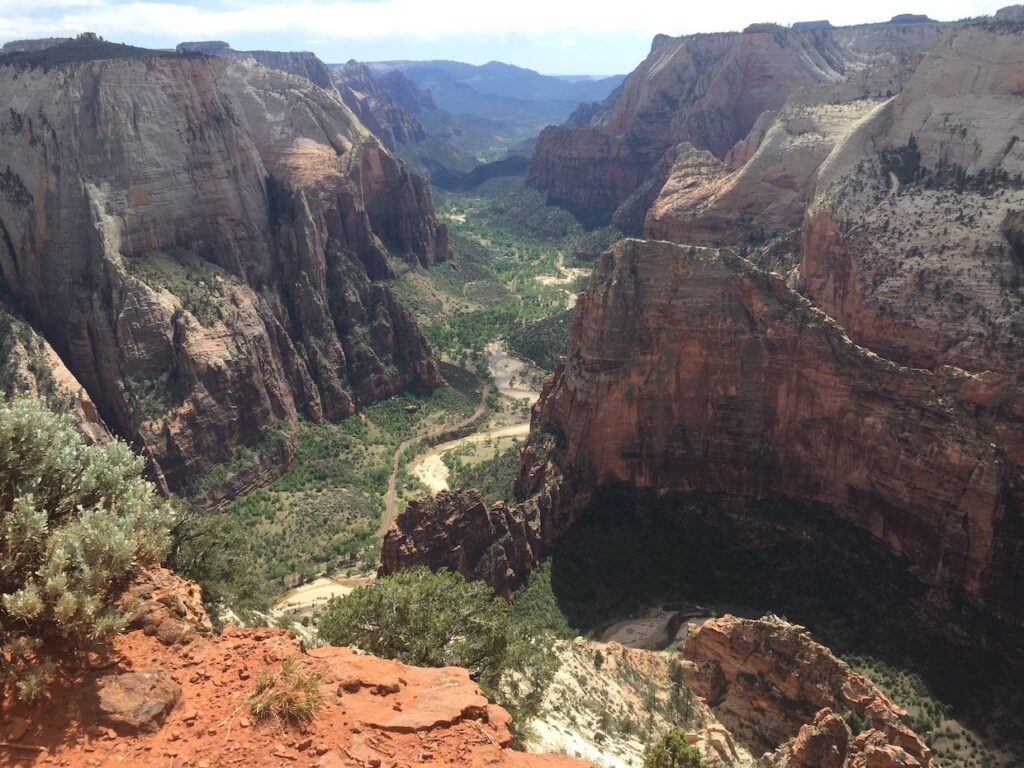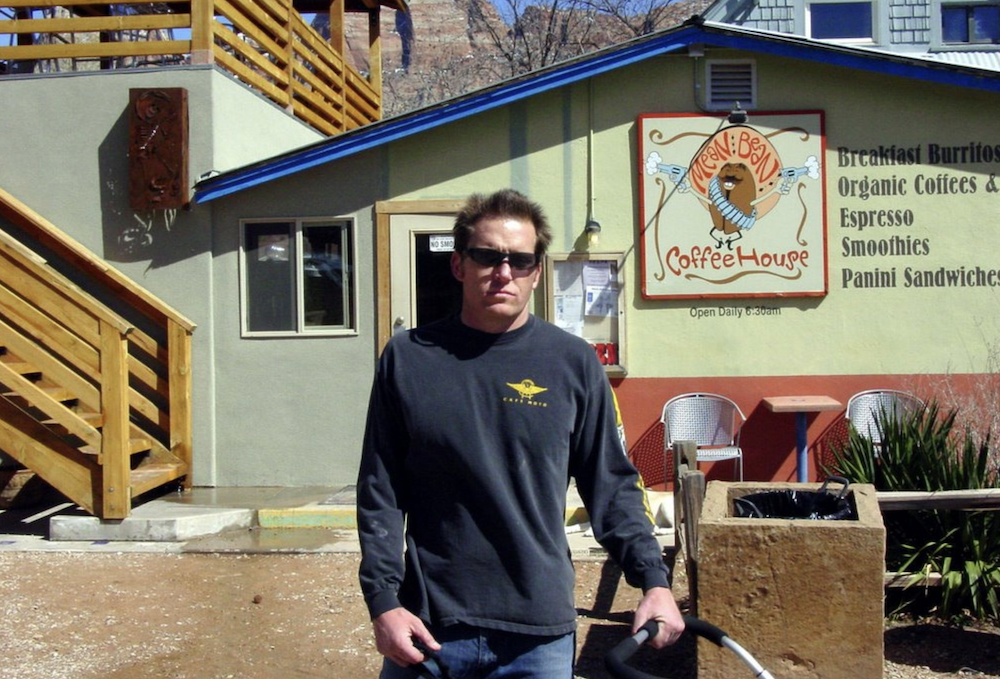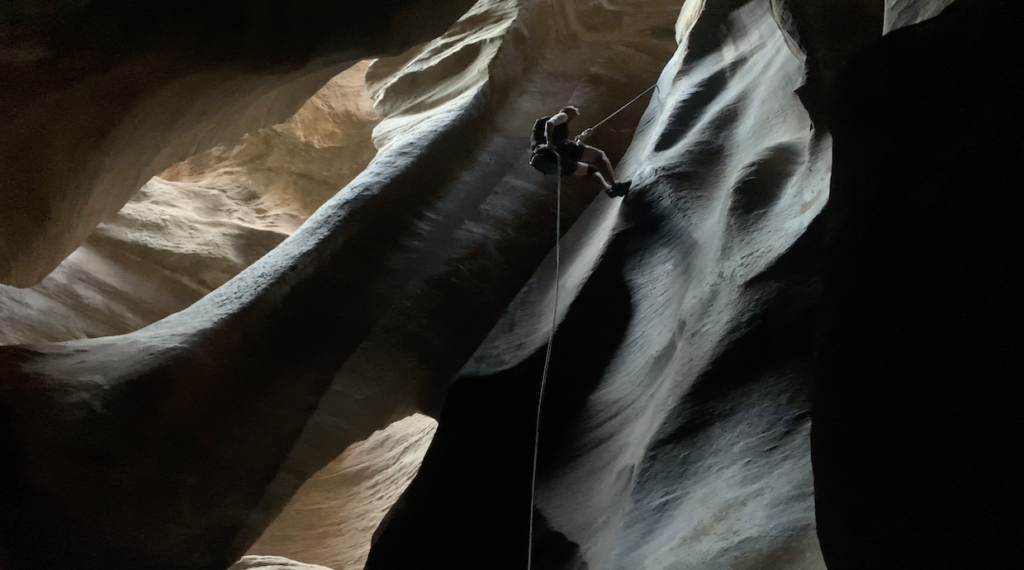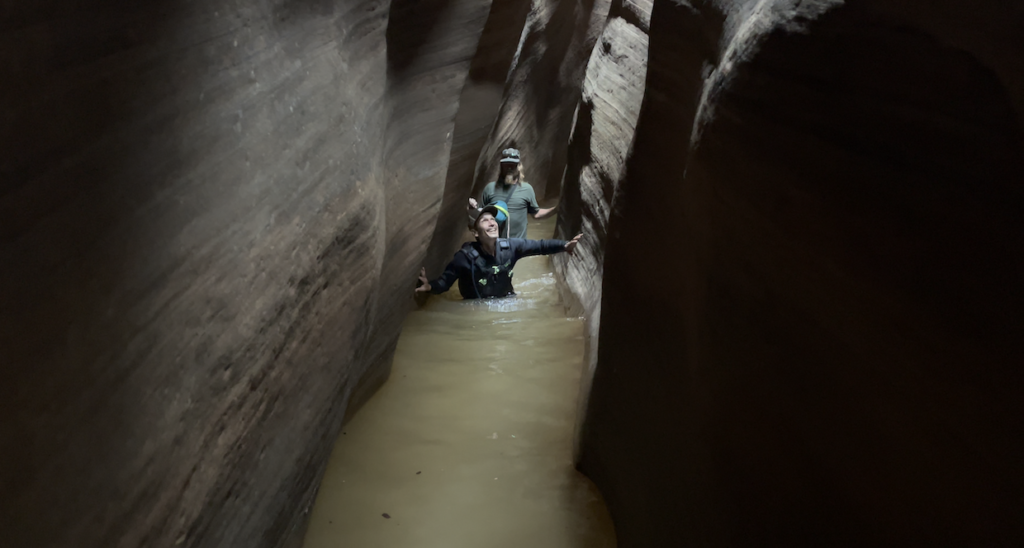Officials at Shenandoah National Park have extended a pilot program which requires all hikers on the Old Rag Mountain Trail to obtain a timed-entry reservation through Rec.gov. But do the daily numbers of hikers on this trail justify this restrictive system?
I last hiked Old Rag Mountain on a dreamy Sunday afternoon back in August of 2019. I found the trail to be absolutely delightful, with a fair degree of scrambling, and a even greater degree of fun!
This trail is probably one of the most enjoyable routes on the entire east coast. Old Rag can accurately be described as a true adventure hike, which requires the use of both arms and legs in order to shimmy between narrow rock crevices and up short sections of rocky outcrops, many of which may strike fear into those with a tendency to shy away from heights and exposure.
Skies were mostly sunny, with occasional puffy clouds, and the temperature was a perfect 80 degrees. Crowds, although advertised to be heavy by rangers at the visitor center, were light and cheery, and not once did I find myself waiting in a queue for passage through any of the trail’s tighter sections, such as the “Squeeze”, or the “Chute”.
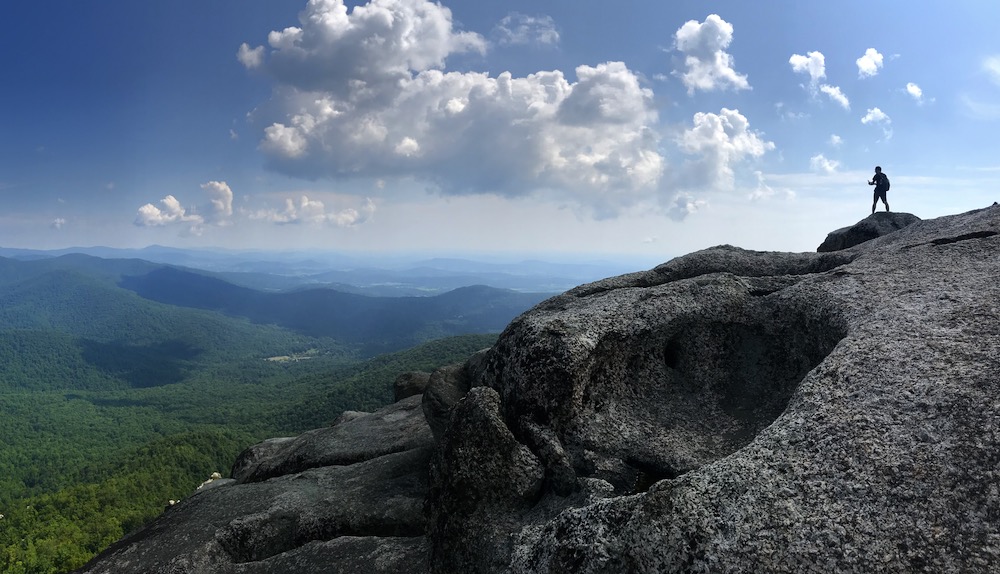
Even the summit area, which is often decried for crowded conditions, seemed spacious and accommodating. While I would estimate there to be somewhere in the neighborhood of 30-40 people up there, it seemed entirely reasonable that everyone could find their own little section of rock to sprawl out in the sun, and enjoy what is likely the best view in the State of Virginia.
Reports from Shenandoah officials however, often describe the trail as crowded, with lines of people stalled in various sections of the trail, as they wait for slower folk to maneuver through the maze of large boulders. Stories of dangerous conditions, the trampling of vegetation, along with a lack of parking spaces led park officials to analyze trail usage in 2019, and to propose a ticketed access program the following year.
The results of the 2019 study are presented in a manner that seems to suggest that the public users of this trail support restrictive measures, in order to “reduce environmental impacts”, “protect visitor safety” or to “protect Congressionally-designated Wilderness values”.
So, lets examine the methods by which the park arrived at justification for the permit system.
2019 OLD RAG VISITOR USE STUDY
The time period chosen for the study, termed the “sampling period”, occurred in October of 2019, during the peak foliage season in the park, which was noted in the study as a popular period for hiking Old Rag. Thanks to this study, and the recently released 2022 study, we now know that October’s leaf changing season is by far the busiest time of year on Old Rag, but let’s get into what that means a bit later.
When the park implemented the Timed-Entry Pilot Program on Old Rag in March of 2022, they capped the number of daily hikers at 800 per day. If we examine the chart below, we’ll see that in the 31 days of examination in 2019, the number of hikers on Old Rag only exceeded that number 8 times, some 25% of the days in question, again, during the park’s busiest season.
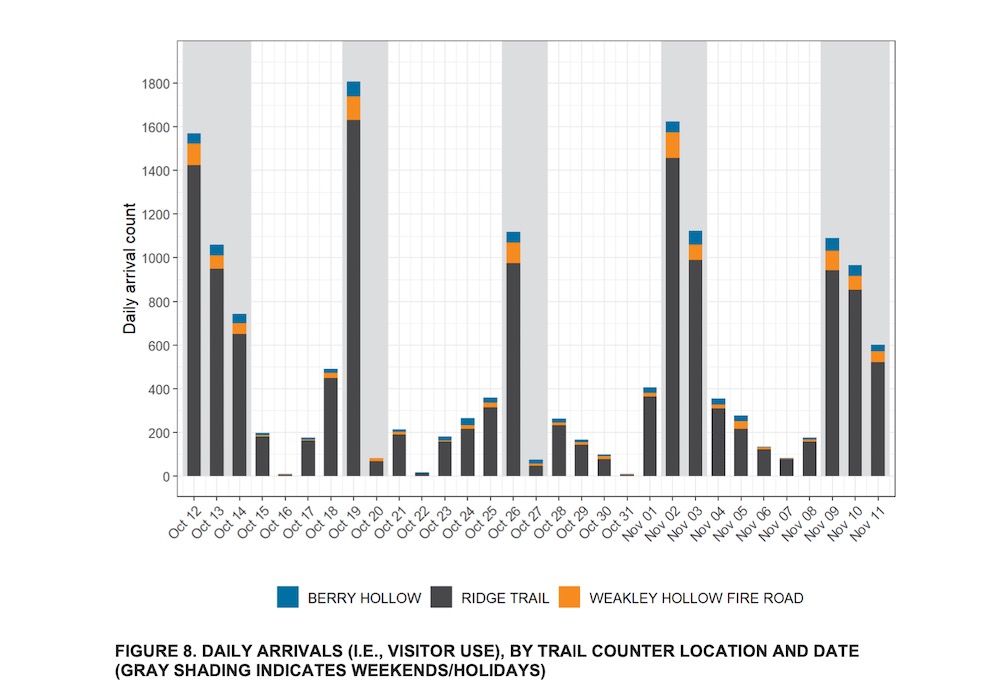
When the park moved toward the pilot program, they elected to cap the number of hikers on Old Rag at 800 per day. If the park already knew that the trail only saw 8 days during this period that exceeded their established safe number, why would they implement a program that restricted access during a 9 month period that totaled 275 days? We’ll look into that later too…
Sampling Size of Survey
Five hundred and six hikers were asked to take part in the survey, 405 of whom agreed, while some 20%, or 101 of those questioned, refused to participate in the survey.
It would be interesting to know what responses those who refused to answer would have given, as they may well have been quite skeptical of the park’s intent with such surveys. You may recall the old “I’m from the government and I’m here to help” mantra of past generations, and the tendency of some folks to scurry away in haste from such seemingly well-meaning government agents.
Peak v. Non-Peak Days & Location
The study divides the trail usage into peak and non-peak days, with weekends and holidays comprising peak days, and common weekdays as non-peak. Obviously, the peak days experienced higher usage numbers, and consequently, higher degrees of congestion.
Also pertinent to our examination is the location of the congestion on Old Rag. The study calls attention to three separate areas of concern: The parking lot, the rock scramble, and the summit.
According to the report, some 34% of those surveyed felt crowded in the parking lot on peak days, while only 6% felt similarly on weekdays. This seems somewhat consistent from my experience in August of the same year, as the parking lot was the busiest area I encountered that day. It usually is for some reason.
Nevertheless, the parking lot had plenty of remaining spaces, as there are nearly 300 spaces available among three lots at the trailhead.
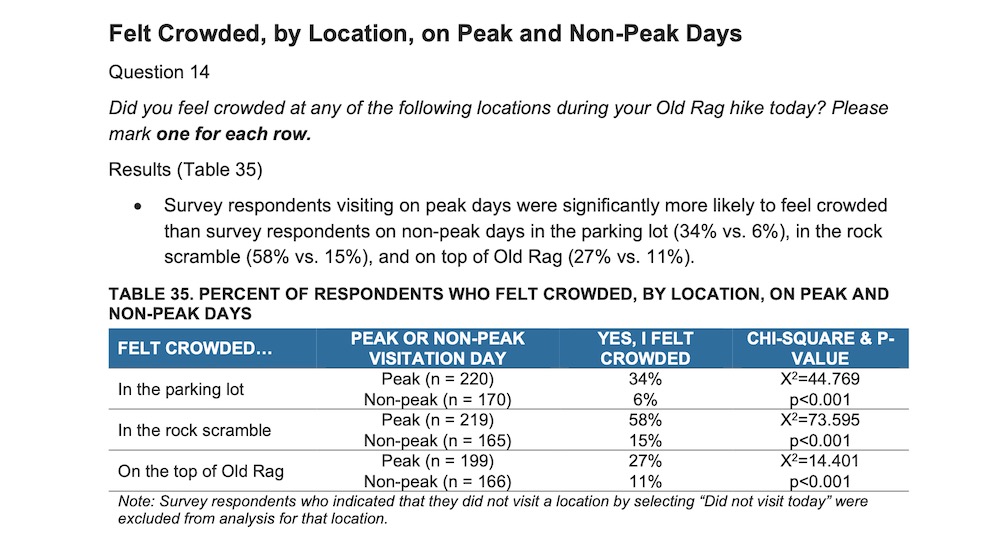
The rock scramble held the most congestion on peak days, with 58% of survey participants indicating that they felt crowded on peak days, while only 15% reported such on non-peak days. And finally, 27% of the summit folk felt cramped on peak days, while a mere 11% claimed that they were too close to other summit revelers on non-peak days.
Peak days likely drew responses from visitors that were more in favor of restricted access, as nearly 70% of users reported having to wait in a queue to pass through the “Squeeze” or the “Chute”.
By contrast, non-peak days naturally led to the opposite percentage, with only 30% of hikers indicating that they waiting in a queue on weekdays. Of respondents on who queued up on peak days, 73% reported waiting more than 5 minutes, while 36% waited more than 10 minutes. Those who were forced to queue up on non-peak days however, most often waited for less than 5 minutes.
The Summit Experience
Another area of concern for park officials is the Old Rag Summit. This area is somewhat expansive, with several areas accessible to nimble hikers who wish to relax and enjoy the view upon reaching the summit.
Numerous vistas are available atop Old Rag, which lie separated by huge boulders and vegetation. On the day I visited in 2019, there were somewhere around 30 people on the summit, all separated into small groups in their own little areas. This seemed to be fine, as those who wished to have a more private area could probably find such a site by wandering toward the west, where the views extended out toward Skyline Drive and the ridge of the Shenandoah Mountains.
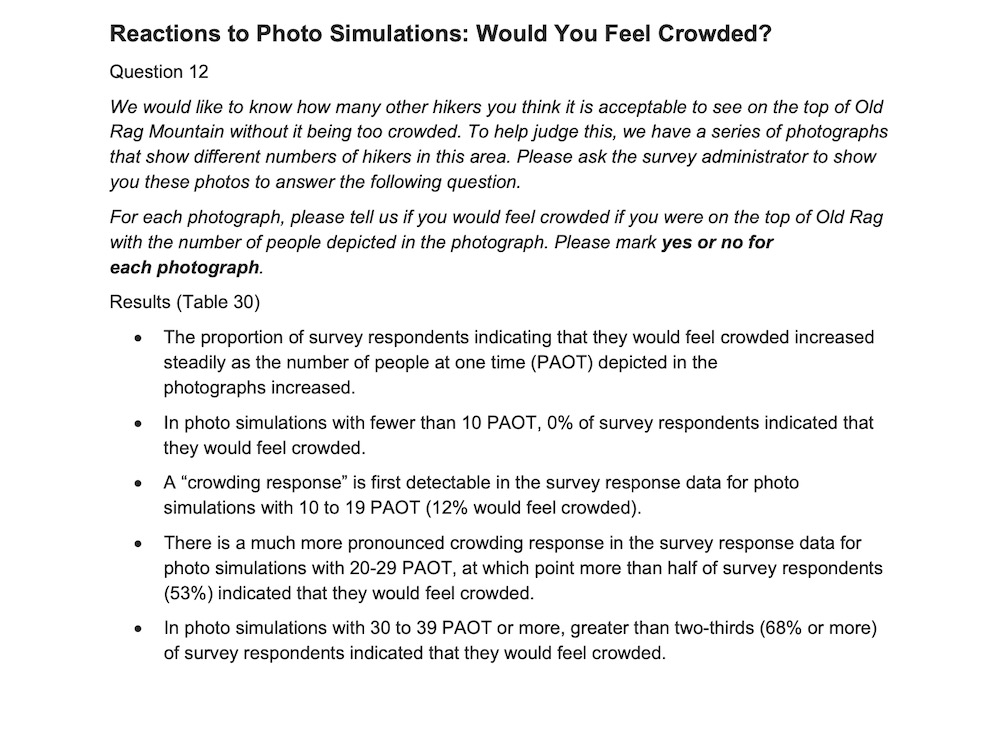
Rather than to ask about the conditions on the summit during their individual hike, the 2019 survey asked participants to study a series of photographs that showed differing numbers of hikers on the summit, and to decide what they considered to “feel crowded”. Why not just ask about current conditions on the summit on the day of the participant’s hike? Well, you’ll have to ask the NPS.
The Fear Factor
In an apparent effort to capitalize on the fear factor associated with an adventurous section such as the Squeeze or the Chute, the survey asked participants to relay their concerns for safety on the Old Rag trail. Some 41% indicated that they were concerned with “slipping and having a bad fall”, and some 25% suggested that they were worried about “being injured while hiking the trail”.
Unbelievable… Let’s recall that 75% of these respondents were under the age of 45! What has happened to the physical condition of humanity? This trail is just not that difficult… I digress.
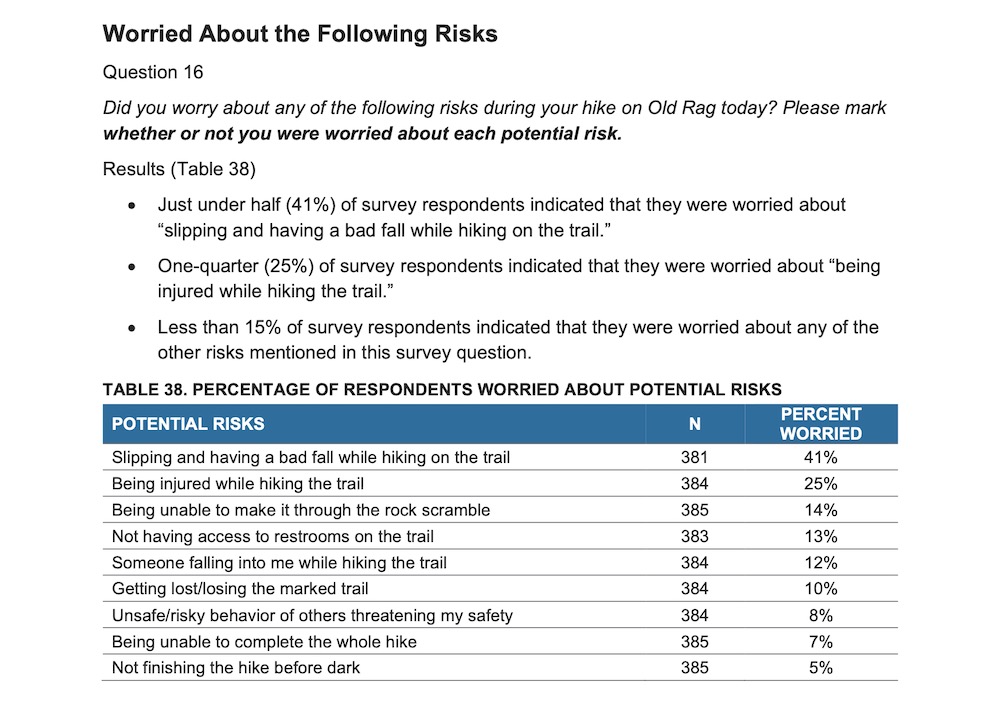
Incredibly, a stunning 10% of survey participants somehow worried about getting lost on the Old Rag trail. Now if this trail was as busy as the NPS would have us believe, it would be a highway… & how would one get lost on a highway? I digress, again.
Observations by those on the survey were interesting. Some 43% reported observing litter on the trail, but the survey apparently did not inquire as to whether those observing litter along the trail picked it up. Wise hikers always leave the trail better than they found it, just sayin..
In a rare comic note to the survey, 38% of respondents reported that they encountered individuals who they believed were unprepared for the hike, although the majority of hikers surveyed, 92%, felt that they themselves felt prepared for the adventure. Somebody’s got an ego on the trail…
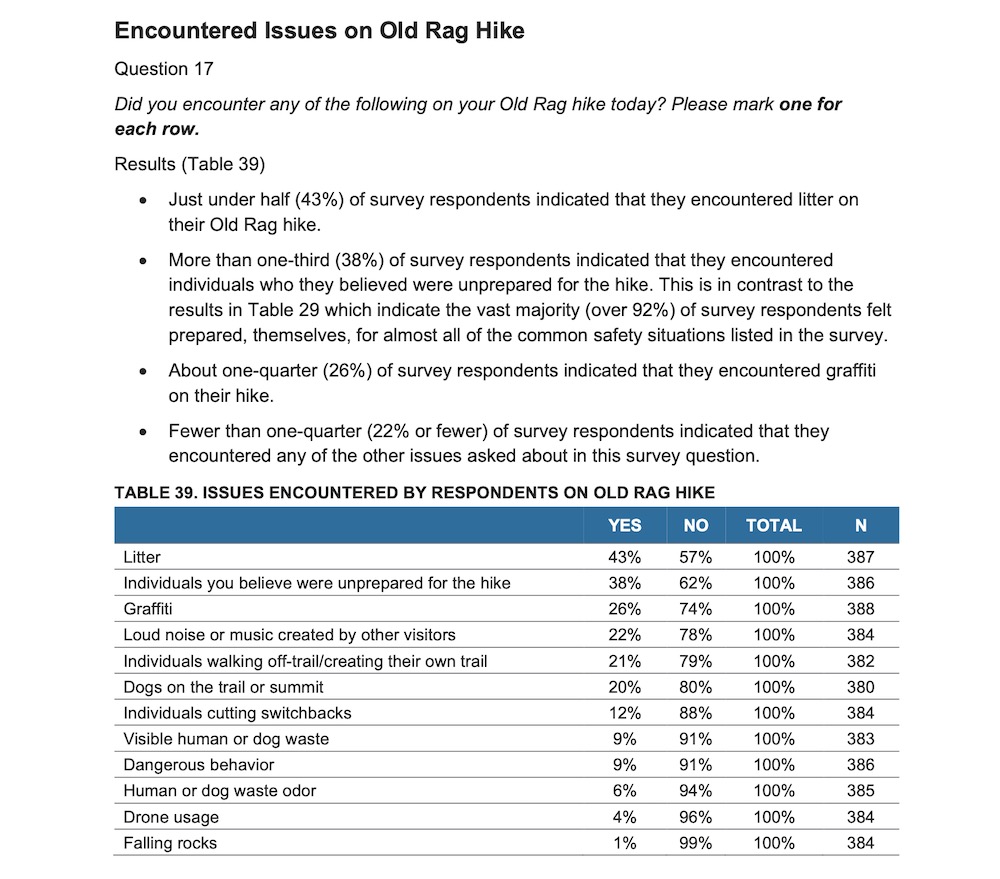
Somehow, 26% of people reported seeing graffiti on the route, which I certainly did not see, aside from the constant blue blazes and arrows that are painted every so many feet along the route.
The True Goal of the NPS
Finally, the survey gets to the apparent goal of the National Park Service: To restrict access to the Old Rag Mountain, feigning public support for public land access restrictions by posing a survey during the busiest two weeks of the year.
According to the results of the survey, 46% of respondents indicated that they support stationing more rangers along the trail, in an effort to reinforce safety, trail etiquette, and Leave No Trace principles.
But this did not happen. Instead, the pilot program conveniently skipped this option, and ran with option number two, which limited hikers through a reserve in advance permit system, which 40% of survey participants felt was justified due to their experience on this trail, again, during the two busiest weekends of the year.
It should be noted also, that the park ignored another idea equally supported by 40% of respondents, to provide a first come-first served permit system.
So, our examination of this section of the survey gets right down to the goods. The park chose to give the keys to Old Rag, to a private, for-profit multibillion dollar corporation, rather than to provide more rangers for safety, some of which could certainly be volunteers. Nor did the park seem intrigued by the option of first come, first served permits, which seem to be a thing of the past… So much for the early bird theory in this world of online profits.
Oh, and by the way… 40% is not a majority. That number leaves 60% of 2019 participants, during the busiest two weeks of the year, who indicated that they did not support any implementation of regulations. But the NPS likely already had a plan…
2022 Pilot Program Report
Since we have the luxury of hindsight concerning the implementation of this program, we’ll take into account the information provided in the most recent Pilot Program Report from 2022. This report was released in January of 2023, and details the reported numbers from the program’s initial rollout.
Amazingly, the numbers of hikers heading for Old Rag takes a drastic turn upward during the fall months, the time during which the initial survey was conducted. It is highly likely that park officials already knew that this time of year would provide the greatest “shock factor” for the number of hikers on the mountain, and would thus provide the greatest degree of support for a restrictive entry program.
This program ran for 275 days in 2022, and during these dates, the numbers of hikers on Old Rag is quite surprising. Never do these levels suggest that this trail is being “loved to death”.
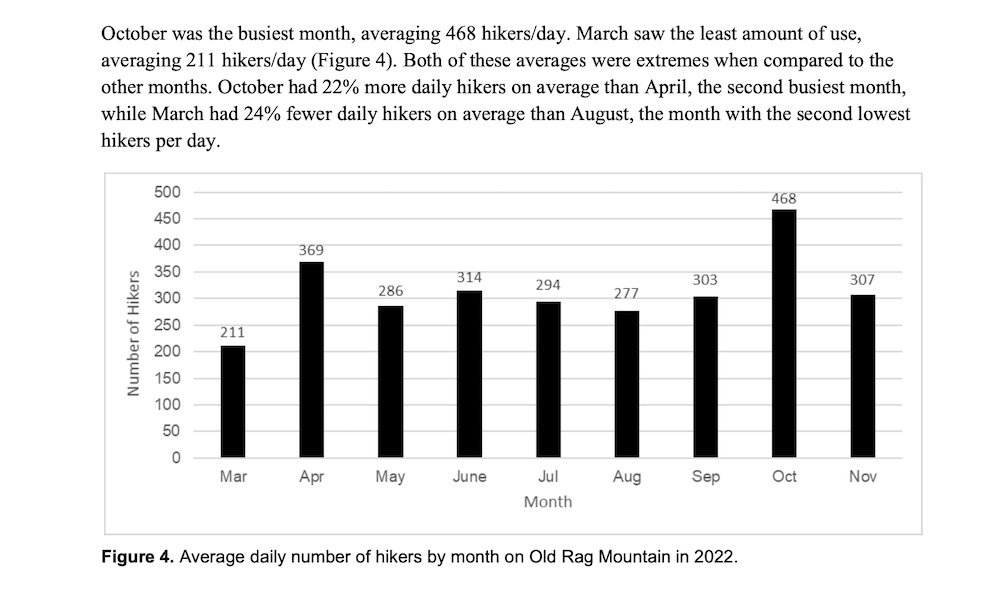
Quite the opposite, the study shows that most days on the trail are relatively tranquil, with an average number of hikers somewhere around 364.57 hikers per day, during the park’s busy fall season. Even the weekend averages don’t come anywhere near the number of 800 per day, with an average of 607.5 hikers on peak days, during the busiest season.
Of those 275 days, the trail only saw the maximum number of hikers on a total of 20 days, 19 of which were weekend days. Fourteen such days were in the fall, and six were in the spring, with the summer months seeing a mere trickle of hikers on Old Rag.
Park Junkie Verdict
So, let me be clear. In my opinion, these studies seriously undermine the NPS claim that restricting access to Old Rag is an attempt to preserve the environment, protect park resources or provide a safe and enjoyable visitor experience.
There is little that can be said to promote such a claim, as the numbers simply speak for themselves. There is simply no justification for a 9 month period of restricted access to this hike, and if there even was an argument for restricting access on the busiest of weekend days, there exists no study by which these officials can justify restricting access on weekdays.
This is a clear money grab…
So… It appears my nature loving friends, that John Muir was right when he surmised nearly a century and half ago, that “nothing dollarable is safe”. In the game of public land access, the restriction of public access to trails and public spaces is indeed dollarable, and is certainly not safe from the greedy hands of corporate barons.
Good For Hikers? Or Good for Booz Allen?
This 2023 report shows that this system is probably working, if nothing else, to provide income for Rec.gov, the proceeds of which go directly to multibillion dollar government contractor Booz Allen Hamilton. From March 1 through November 31 2022, some 95,444 hikers paid a $1 fee in order to make their way to the summit of Old Rag.
Booz Allen keeps all of that, by the way.
Now, I know… This is not a lot of money in today’s world. Alas, the effects of inflation has rendered this amount of funding an almost laughable amount in most modern cosmopolitan locations. Understandably, many folks can’t even conceive a life in which their income is less than the once-coveted six figure category.
But this is simply one of a rapidly growing number of income sources falling into the hands of our friends at Booz Allen, who now control more than 4,200 such public land locations and trails. The company understands quite clearly that this $1 figure on each permit is rather small, but eventually yields substantial profits.
A recent Wall Street Journal article that examines the arrangement between the National Park Service and Rec.gov reports that the corporate giant’s president and CEO fully appreciates the business model at play in the public land management game.
“One thing I learned in B-school, for all that money, it’s a small number times a big number is a big number,” Booz Allen president and chief executive Horacio Rozanski reported in 2019, which was ironically the same year NPS officials at Shenandoah started down the treacherous road that would just three years later, provide a small $1 fee to Rozanski’s corporation, for every single hiker on a small boulder-strewn mountain in western Virginia.


